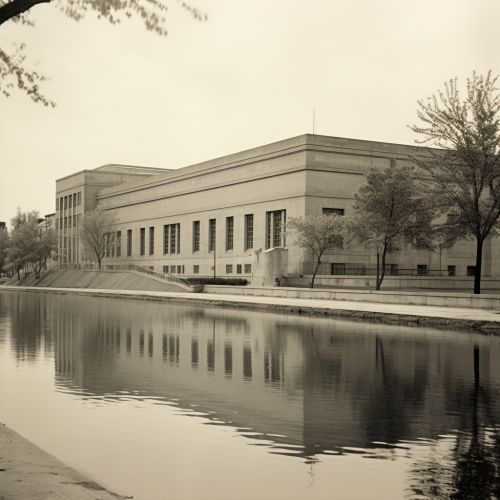Naval Ordnance Laboratory
History
The Naval Ordnance Laboratory (NOL), originally established as the Mine Warfare Test Station, was a United States Navy facility located in White Oak, Maryland, that specialized in research and development of naval ordnance. The facility was operational from 1945 to 1992, and during its tenure, it made significant contributions to the development of advanced naval weaponry.


The origins of the NOL can be traced back to the early 20th century, when the U.S. Navy recognized the need for a dedicated facility to conduct research and development in the field of naval ordnance. The Mine Warfare Test Station was established in 1918, and it was later renamed the Naval Ordnance Laboratory in 1945. The NOL was initially located in Washington, D.C., but it was relocated to White Oak, Maryland, in 1950.
Research and Development
The NOL was primarily involved in the research and development of naval ordnance, which included weapons such as torpedoes, mines, and depth charges. The facility was also involved in the development of advanced technologies such as sonar, radar, and guidance systems for naval weaponry.
One of the most significant projects undertaken by the NOL was the development of the Mark 48 torpedo, which is still in service with the U.S. Navy today. The Mark 48 is a heavyweight torpedo designed for use against submarines and surface ships, and it is known for its advanced guidance system and powerful warhead.
The NOL was also involved in the development of the Mark 50 torpedo, which is a lightweight torpedo designed for use against fast, deep-diving submarines. The Mark 50 is known for its advanced propulsion system, which uses a liquid monopropellant for high speed and long range.
The NOL made significant contributions to naval warfare, particularly in the field of anti-submarine warfare. The facility's research and development efforts led to the creation of advanced torpedoes and mines that were capable of detecting and destroying enemy submarines.
The NOL also made significant contributions to the development of sonar and radar technologies. These technologies played a crucial role in the detection and tracking of enemy submarines and surface ships, and they continue to be a vital component of naval warfare today.
Closure and Legacy
The NOL was closed in 1992 as part of the Base Realignment and Closure (BRAC) process. The facility's research and development functions were transferred to other Navy facilities, and the site was redeveloped for other uses.
Despite its closure, the NOL's legacy continues to be felt in the field of naval warfare. The advanced weaponry and technologies developed by the facility continue to be used by the U.S. Navy, and they have played a crucial role in maintaining the Navy's technological edge in naval warfare.
